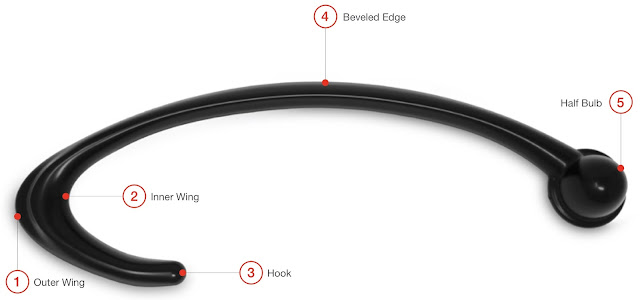We live in an age where your health is in your hands. No longer is inadequate information, tools, or ability an excuse. Relatively speaking, self myofascial care is one of the biggest health returns for your money and high return on investment from a time/money perspective.
Self Myofascial care is when a person uses a tool or object to influence the muscles, nerves, blood vessels, bones, lymphatic system, and fascia. Fascia is a big deal as it is literally everywhere in your body. It covers your body, it's embedded into the muscles, it forms "structures" or thickened areas. It has the ability to contract, relax and move. It can be dehydrated. When we target an area, we are essentially working all this stuff and this is globally referred to as connective tissue.
A person can experience restrictions in the connective tissue. This means that areas, such as between muscle bellies, that should have a slight glide or wiggle room, no longer wiggle or move as smoothly as they should. Over time, this can lay down fibers that further increases the inability to glide smoothly. This can also mean these areas are less hydrated. Dehydrated tissue is one mechanism that can be thought to contribute to muscles strains.
Certain areas of the body can also experience trigger points. Trigger points are areas that are super sensitive when applied pressure too, and can even express pain at sights elsewhere in the body. For example a trigger point in the glute medius, a hip muscle on your side, can express pain in the lateral calf and even into the lower back. Trigger points can be active or latent. Active means you know this hurts, latent means you were unaware that it hurt until it was pressed on. Trigger points, while controversial, have been studied and shown that when blood was taken from them a much higher (H+) was in them. It was more acidic.
Restrictions in movement can also start to lead to congestion from a lymphatic system perspective. Remember, the lymphatic system works on the muscles actively contracting. If they can't contract as strongly as they are capable of, the lymphatics can be congested in certain areas. There is some evidence that this creates muscle inhibition. (It makes us unable to express the strength we should be able to) Muscle weakness.
When the body starts having restrictions in how muscles contract or move and trigger points that unconsciously affect how we feel, we will start to move differently. This compensation pattern may last weeks or years. But eventually, this too will have it's own restrictions and inadequacies. How often do we just chalk it up to moving poorly or sore when we wake up or an increase in nagging injuries to just old age. Perhaps our connective tissue is just in poor shape?
Do you brush your teeth twice per day? What did you do for your connective tissue today?
WHY DO IT!
1. Keep from developing or start to break up the restrictions. This is going to help you move better. More easily. Increased Range of Motion!
2. Stop Trigger Points, but also become aware of latent ones. This is going to start to get rid of unconscious avoidance of movement or positions. It can also drop down peoples pain!
3. Increase lymphatics and blood flow. This brings more blood flow (more oxygen) to the tissues, but also gets rid of the metabolic waste products. Win, win. It can create stronger muscular contractions!
4. It can help get rid of the delayed onset muscles soreness that can be present after hard workouts. Increase recovery!
HOW IT DOES IT!
1. It increases circulation of blood flow. Blood flow is the reason tissues can heal. Sometimes people have surgeries just to get blood flow to an injured area. This in itself is such a big reason it can not be overstated.
2. Connective tissue heats up. Some famous fascia researches state that when the area hits a certain temperature from myofascial work, the area will move better and have better contraction ability.
3. Tissue tension changes. The connective tissue can relax for a bit. Often times when one area of the body relaxes another area adjacent becomes more active or "stronger." This is called reflex neural inhibition. Work your quadriceps and often the lateral hips will feel stronger.
JUST DO IT!
At the end of the day regardless of everything you just read, I believe there are two very unscientific reasons why we should do a self care on our connective tissue. One, it just feels good. You will get up and feel better. Two, it's a gateway habit. Ever hear of the concept gateway drug? Haha...yea, gateway habit. When you start to do self care, I believe it bleeds into other areas of your life from exercise to nutrition to self image. The snowball effect.
Minutes a day at minimal cost can create huge healthy and lifestyle benefits. As a plug in we created the MOBI to address all the soft tissue needs for a self maintenance program. It replaces the foam roller, the ball, the stick and every other odd object you have collected to hit different parts of your body. It's also a nice self defense tool if the zombie apocalypse hits.
2018 should be the year you develop your Self Myofascial Care Program, your body deserves it, and you only get one of them.

No comments:
Post a Comment